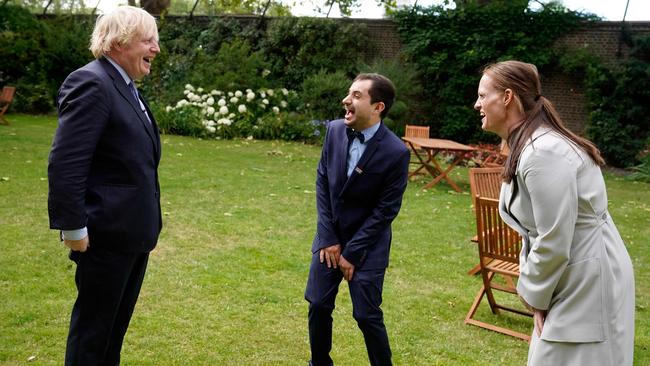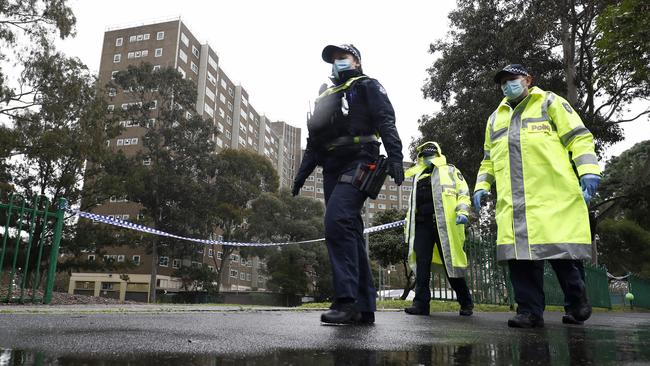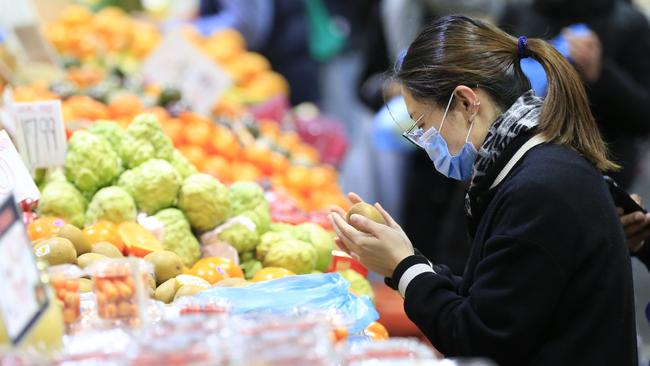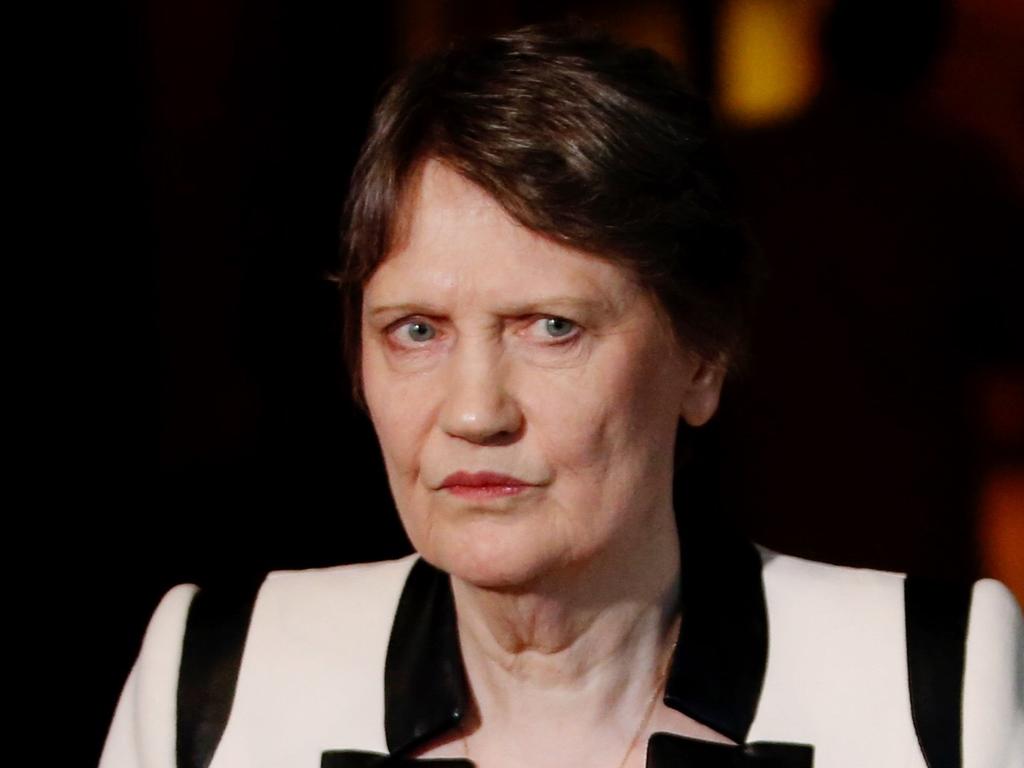Viral panic just as dangerous as we confront COVID-19 second wave
COVID-19 is regaining momentum and Australia is at the point where Britain once stood. These are the lessons Australia must learn from the overseas experience.

Australia’s leaders, with their quick border closures in January, gave themselves a short window to watch the rest of the world and pivot a pandemic response accordingly. Yet what has happened? Military deployed, heavy fines, interstate border closures, regional lockdowns, panic and fear, inflammatory language by state politicians: a reaction seemingly disproportionate to the viral threat. In Britain, the decision-making has been no less hysterical and wholly unpredictable. Borders stayed wide open until last month, only to shut when the virus was in rapid decline; schools are closed for most pupils until September, but pubs reopened last weekend.
These are the lessons Australia can learn from the overseas experience.
Check the latest science
Coronavirus is nasty for a very small proportion of people, but it is not Ebola. It badly affects the over-80s with comorbidities, including obesity, yet even of that highest risk group more than nine out of 10 survive. There are no details about the comorbidities of those who have died in Australia. In Britain, 89 per cent of deaths have been those aged 65 and older and 91 per cent of these had at least one underlying condition.
Significantly, the latest (yet to be peer-reviewed) studies show people — as many as 80 per cent — have natural immunity to the virus because of the body’s T-cells.
The Karolinska Institute in Sweden found public immunity is significantly higher than antibody testing by at least 30 per cent.
German researchers found that in 81 per cent of cases, people’s exposure to four other common colds promoted T-cell immune reactions against COVID-19.
That could explain why as few as 15 per cent to 20 per cent of partners in the same household, despite being in close contact, get coronavirus. The cruise ship statistics show a similar rate, and the locked-down Petri dish of the Melbourne tower blocks may yet show similar numbers.
British cancer doctor Karol Sikora has long suggested T-cells are the key to the immune response. “This is significant (research),” says Sikora. “It could mean that lots of people have some immunity. More work to do, but very promising.’’
Do not follow the UK
“If Australia is now copying the UK, it is bad for Australia, since we haven’t made a good job of it,’’ John Lee, a former professor of pathology and National Health Service consultant pathologist, tells Inquirer. “Our (British) government jumped in with drastic curtailment of freedoms without giving any thought at all to the risks to health, to the economy, or to other knock-on effects.

“Lockdowns and social distancing are not proven to be effective for the virus, and they clearly cause many other harms; so really, the response to this infection has been a total fiasco.’’
Along with nearly every other scientist, he believes despite the best efforts, no one can stop the virus and Australia should revisit what its endgame is. “This is an airborne virus … governments should think very carefully about what they are doing before they leap in,” Lee says. “Sometimes it is logical, scientific and least harmful to do nothing while waiting to better understand the truth of a situation.
“Countries have been copying China in a sort of political control-fest. But really there is no scientific justification for dealing with epidemics by following the approach of totalitarian states and locking us up.’’ Countries without lockdowns have similar transmission patterns, and most countries, including Britain, locked down well after peak transmission.
The reopening up of Britain, Italy, Spain and France has not led to any spike in deaths. Even in the US, as cases rise, the death rate is well below the peak.
As in Melbourne, the more tests, the more positive cases will be found, but most are mild or asymptomatic cases of younger people not requiring hospitalisation.
The latest immunological and serological studies show coronavirus is indeed like a very bad flu season. It is easy to look overseas and see horrendous figures, but cases are not deaths, and comparisons should be made with previous years in each country.
Last year more than 800 people, median age 86, died in Australia from flu, with 310,011 laboratory-confirmed flu notifications. This year 106 people have died, attributed to COVID-19, with another eight now in intensive care and more expected as the virus permeates the population.
Stanford biophysicist and Nobel laureate Michael Levitt released a new mathematical study last week, saying: “We are going to see that although coronavirus is a different disease, the net impact of death is going to be very similar to severe flu and it’s going to be that way without lockdown.’’
If there is an increase, the weather, or perhaps airconditioning, may have more to do with infection rates than any distancing or lockdown, some scientists believe, for the virus thrives in cooler, moist conditions.
Look after the elderly and vulnerable
British officials made a big mistake in clearing out hospitals in a panic after epidemiologists had so wrongly predicted half a million deaths.
“Please don’t shut down other parts of the medical system,’’ says Angus Dalgleish, a cancer specialist who developed a treatment for HIV-AIDS and is working on a coronavirus vaccine.
He says doctors now know the virus affects a T-cell response and have adjusted their treatment so at the earliest sign of a severe infection patients are treated with high-dose vitamin D and anti-inflammatories. As well, the damaging use of invasive mechanical ventilation has declined.
But back in March, the British transferred tens of thousands of elderly patients back into care homes without testing for coronavirus, and these infected patients quickly passed on the disease to the most vulnerable.

The numbers of British COVID-19 deaths is approaching 45,000 and half as many again from the lonely elderly “giving up’’ — heart attacks, strokes and suicides brought on by the stressful and depressing shutdown of society. About 500,000 people die in Britain each year in normal times.
This year has followed similar patterns to bad flu seasons in 2018 and 1962. In England and Wales 307,000 people have died this year of all causes, 52,500 more than the five-year average. In 2017-18 there were 49,000 excess deaths caused from the flu. Another bad flu year, 1962, had 89,000 excess deaths.
The Office of National Statistics believes COVID-19 “brought forward’’ deaths of some elderly only by several months and will result in lower death rates than the five-year average for the rest of the year. Translated, that means some died of coronavirus in March and April before they’d have died of something else in coming months.
Beware meatworkers, hospital staff, cabbies
This week the British government shut down Leicester because of a spate of cases mainly involving meat-production factories and sweatshops. Abattoirs are believed to spread the virus because of the cold conditions, the heavy work promoting deep breathing and, like sweatshops, the close living quarters of the workers in camps.
In Britain, worker deaths have been highest in sedentary occupations such as taxi drivers, chauffeurs and bus drivers, and medical personnel — including the cleaners, administration staff and trolley persons moving throughout the hospital.
Consider the big picture
About 120 days ago — and remember the virus back then was still a frighteningly unknown beast — the Boris Johnson government briefly went for a herd-immunity response before clamping down hard with a total lockdown. (Studies show peak infections were on March 17, five days before this decision.)
Everything bar supermarkets and emergency departments of hospitals was shuttered. Now the societal damage of virtual house arrest is emerging. Even parking the 25 per cent drop in gross domestic product in two months — with more bad news to come — the impact of diverting every medical resource to coronavirus, when the medical system was never overrun at any point, has been devastating. Treatment for people who may have many years to live, such as young mothers with myeloma, was brutally cast aside to focus on the virus that targets the elderly, most already suffering significant heart problems, obesity and diabetes.
The economic carnage is just beginning, with scores of companies announcing tens of thousands of lay-offs. Nine million people are on government furlough (similar to Australia’s JobKeeper) and unemployment will soar when the scheme ends in October.
This week Chancellor of the Exchequer Rishi Sunak announced new economic stimulus measures worth £30bn ($55bn): cuts to stamp duty, discount restaurant meals, paying six months’ wages of apprentices, on top of nearly £200bn already promised to try to resuscitate the country.
If Australia persists with a hard-lockdown policy it has to weigh up, and cost, the overall consequences.
Be ready for no vaccine
Australia has closed its borders until a vaccine is in place and this may mean a very long and expensive international isolation as the rest of the world reopens from the pandemic. Only two companies, Moderna and Sinovac, are in stage-two trials; five other companies are in stage-one trials while scores of others, including the University of Queensland project with GlaxoKlineSmith, are in preclinical phase.
To date there is no vaccine for other coronaviruses, such as the common cold, and one doctor who was instrumental in discovering a treatment for HIV-AIDS tells a cautionary tale.
Dalgleish tells Inquirer many of the COVID-19 trials have focused on antibody responses in the body, and not on the important T-cells.
By way of disclosure he has teamed with a Norwegian firm to develop a virus vaccine called Biovacc-19 to attack just a small part of the coronavirus, using the same principles that developed Vacc-4x, a T-cell treatment that kills HIV-infected cells.
“We don’t want a repeat of the HIV fiasco, which delayed the development of an effective treatment for decades because the technology for such vaccines was fundamentally flawed,’’ Dalgleish says.
As British Prime Minister Johnson said in May, “I must be frank that a vaccine might not come to fruition.”






Australia is at the point where Britain stood three months ago. COVID-19 is transmitting through the community.